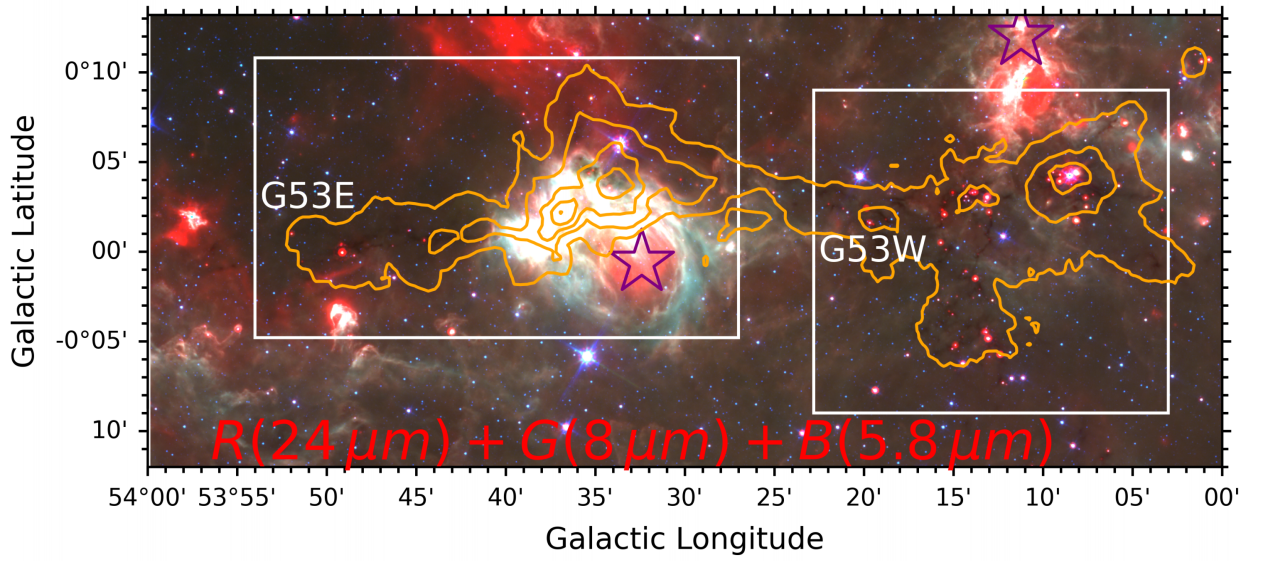

Researchers Discover an End-Dominated Collapse and Hub-filament System in G53 Star-Forming Region
Recently, MENG Dezhao, a PhD student in the Star Formation and Evolution group at the Xinjiang Astronomical Observatory, Chinese Academy of Sciences, and his collaborators conducted a systematic study of the filamentary structure within the G53 molecular cloud. By combining multi-wavelength observations and simulations, they revealed for the first time that the filament is undergoing an "end-dominated collapse" (EDC), a process that is driving star formation.
The relevant research results have been published in Astronomy & Astrophysics.
Filamentary structures are widely present in molecular clouds, and their evolution is closely related to the formation of massive stars. As an active star-forming region, G53 serves as an ideal laboratory for studying the dynamics of filamentary structures.
Using multi-wavelength data including NH₃(1,1)/(2,2)from the NanShan 26-meter Radio Telescope and GRS ¹³CO(1–0), the researchers measured the filament to be approximately 30 pc × 2 pc in size, with a high aspect ratio of about 15, indicating a typical elongated filament morphology.
Further analysis of the velocity-integrated intensity of ¹³CO(1–0) and the H₂ column density distribution revealed clear collapse signatures at both ends of the filament, consistent with the theoretical predictions of EDC. The position-velocity diagram of ¹³CO(1–0) shows that in the western part of the filament (G53W), two massive clumps, C2 and C4, are moving toward each other while simultaneously accreting surrounding material. This dynamic picture directly corroborates the kinematic characteristics of end-dominated collapse.
To validate the observational findings, the researchers performed numerical simulations. These demonstrated that an initially isothermal filament fragments into multiple clumps due to turbulence, and that these clumps subsequently merge at the ends. This finding provides strong theoretical support for the converging motion of C2 and C4.
Moreover, NH₃ molecular line observations detected a "hub-filament system" (HFS) centered on clump C2 in the G53W region. A strong correlation was found between the velocity gradient and velocity dispersion in this region, indicating that mass convergence is the main driver of large-scale turbulence.
More importantly, clump C2, located at the center of this system, exhibits a star formation rate significantly higher than other regions in G53. This demonstrates the critical role of this particular filamentary structure in concentrating material and enhancing star formation efficiency.
This study is the first to combine observations and simulations to systematically reveal the complete scenario of end-dominated collapse and subsequent star formation in the G53 filament, providing both a case study and physical basis for understanding the dynamical processes in massive star-forming environments.

The spitzer three-color composite image of G53. The orange contours represent 13CO(1-0)integrated intensity.
Attachment Download: